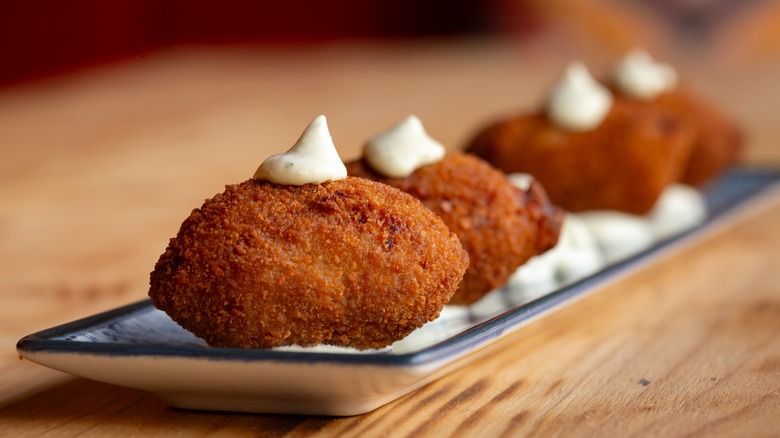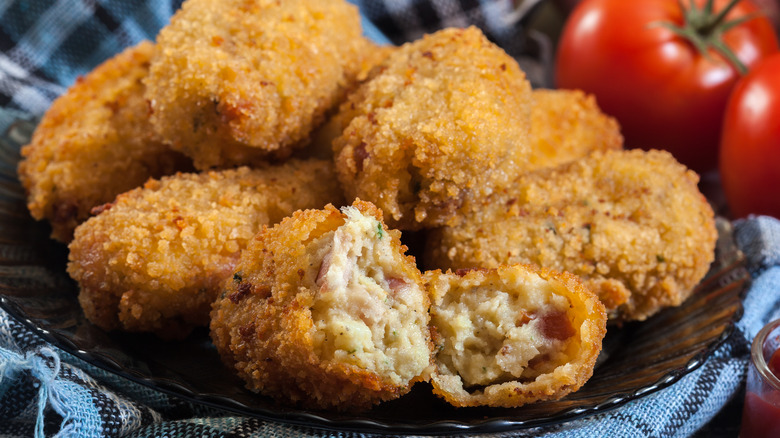How Croquettes Were Created To Use Up Leftovers
Whether they're served as pintxos or tapas (there is a difference), there's no question that croquettes are one of Spain's most beloved national dishes. With their delicately crispy exterior and rich béchamel sauce filling, croquettes (or croquetas, as they're called in Spain) feel incredibly luxurious. However, these deep-fried delicacies were likely created and popularized as an ingenious way to finish off leftovers and prevent food waste.
Like so many traditional foods, croquettes have multiple disputed origin stories, but we can be fairly certain that they originated in 17th- to 19th-century France (their name comes from the French word for crunchy). According to many accounts, croquettes as we know them, with a béchamel sauce base and crunchy breadcrumb shell, were first served at a French royal banquet in 1817. Others credit the creation of the deep-fried treats to the kitchens of Louis XIV in the late 17th century.
What's clear is that, despite their likely royal roots, croquettes have always been appreciated as an economical dish that can be prepared with all kinds of leftovers. These crispy, creamy balls of fried deliciousness can be made with anything from top-tier jamón ibérico or serrano (two distinct Spanish hams) to whatever scrappy bits of meat, seafood, or veggies you happen to have on hand, no matter how ugly — part of the beauty of croquettes is that they transform everyday ingredients into something deliciously unrecognizable.
The humble history of croquettes in Spain
Croquettes gained widespread popularity in Spain during the Spanish War of Independence against France in the early 1800s. By the turn of the 20th century, the crunchy fried delights had become a firmly established culinary classic across the Iberian Peninsula. Various forms of croquettes are popular in countries around the globe, from India to Italy, but Spanish-style croquettes are set apart by their smaller size, béchamel sauce base, and classic fillings such as ham, octopus, cod, and chicken.
Croquettes are an enduring staple in Spain, not only thanks to their slightly addictive taste but also because of their surprisingly thrifty nature. Throughout the thick and thin of the 20th century, from the 1918 flu to the Spanish Civil War and famine of the 1930s and '40s, Spaniards made croquettes stretch even further by mixing in leftover stews, meat scraps, broths, and truly whatever ingredients were available.
Even a leftover chicken carcass can be repurposed as a tasty croquette filling – after boiling the chicken for stock, grind up the remaining scraps and fry up some scrumptious chicken-flavored appetizers. Whether you're enjoying them in an unexpectedly affordable Michelin-starred restaurant or a neighborhood bar, croquettes taste even richer when you appreciate their humble history as a traditional Spanish tapas dish that transforms the simplest of leftovers into a luxurious new treat.

